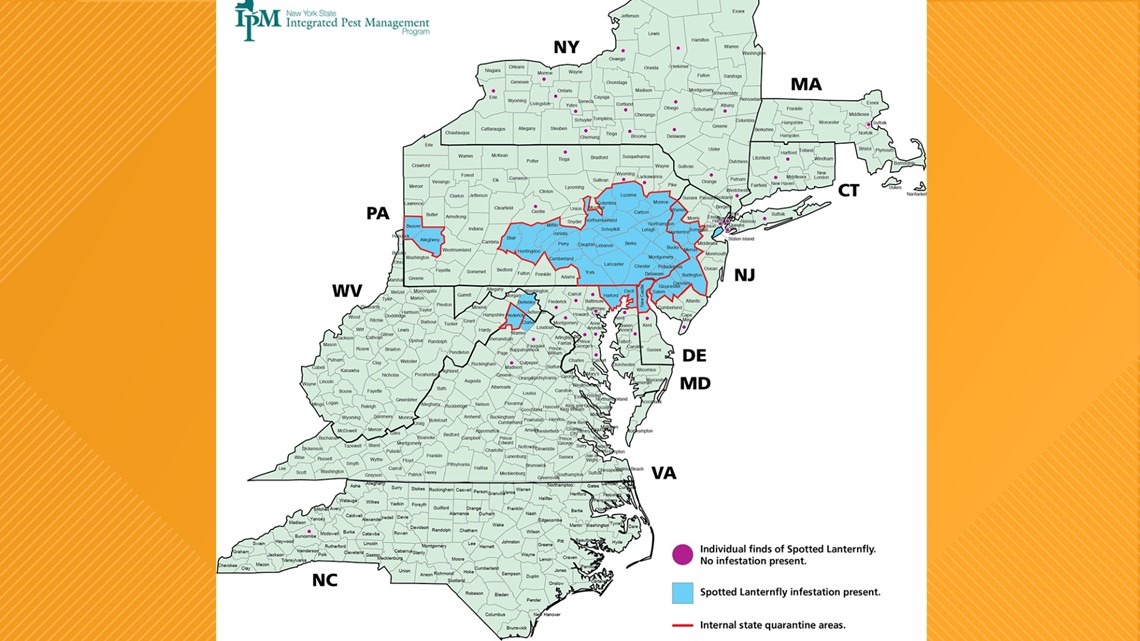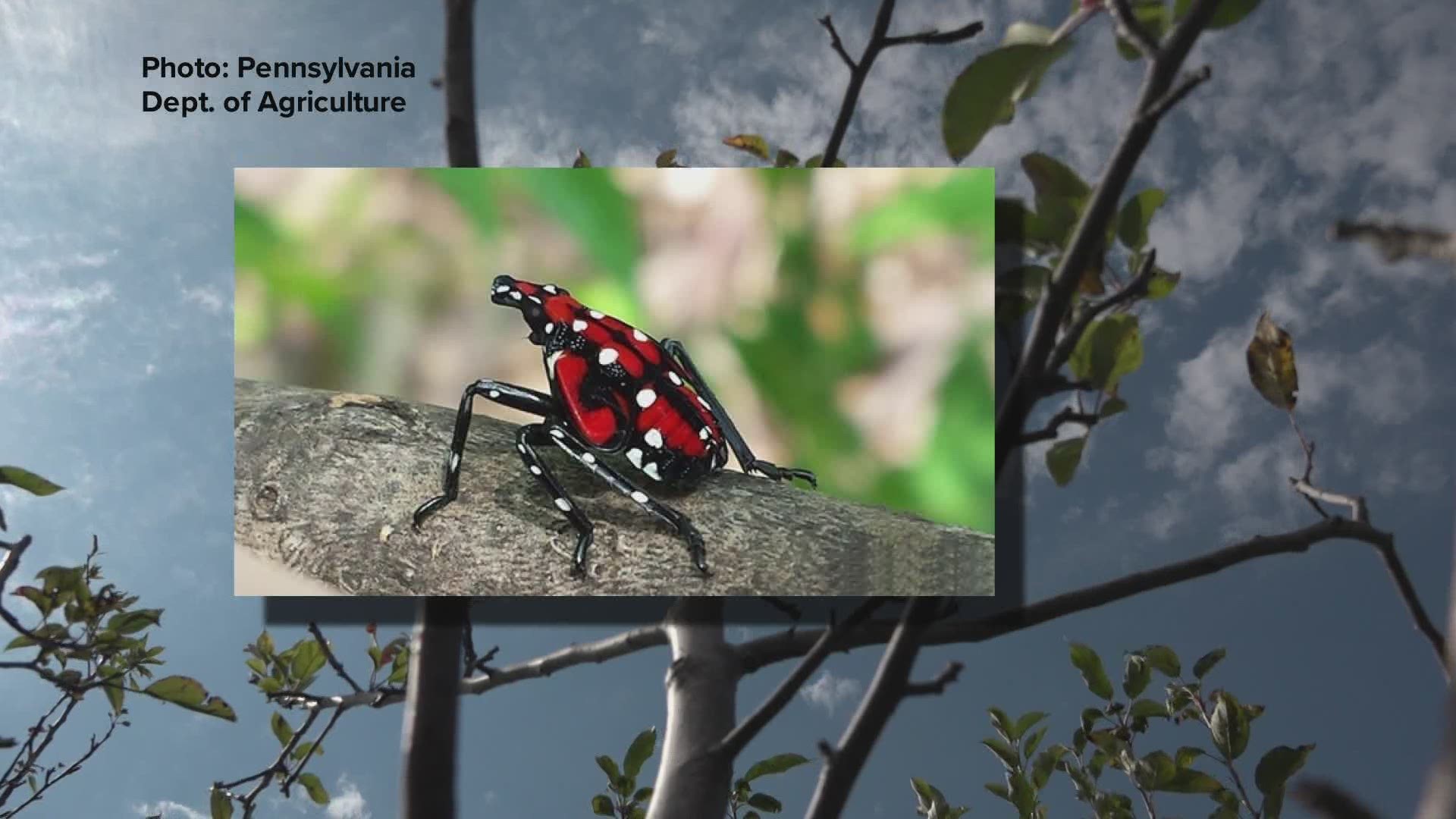MAINE, USA — The Maine Department of Agriculture, Conservation and Forestry (DACF) says egg masses of the invasive spotted lanternfly (SLF) were found on trees in Maine. While no live SLFs were found, DACF is encouraging residents to report any sign of the invasive pest.
According to DACF, the egg masses were found on trees from Pennsylvania, where the species is established, and planted in Boothbay, Freeport, Northeast Harbor, and Yarmouth.
The SLF is an invasive sap-feeding insect from Asia first found in the U.S. in 2014 in Pennsylvania. DACF explains that while the preferred host plant of this pest is tree-of-heaven, SLF attacks over 100 species of trees, shrubs, and vines, and has the potential to impact a broad range of agricultural commodities, including apples, peaches, grapes/wine, maple syrup, as well as the ornamental nursery industry.
“These most recent finds call attention to the fact that there are many ways that spotted lanternfly can travel here from other states,” State Horticulturist Gary Fish said in a release. “Early detection plays an important role in the protection of our state’s economic and ecological resources from invasive species, and we ask anyone who may have received shipments of wood, ornamental plants, or any other materials from Pennsylvania or other Northeastern states to help protect the natural resources and agricultural industries of Maine by checking for and reporting any signs of spotted lanternfly.”


DACF urges anyone who receives goods or materials, such as plants, landscaping materials, or outdoor furniture, from a state with a known SLF infestation to carefully check the materials, including any packaging, for signs of SLF. There are currently known populations of SLF in Connecticut, Delaware, Maryland, New Jersey, New York, Pennsylvania, Virginia, and West Virginia.


"As many families across the state spend more time at home during the COVID-19 pandemic and are undertaking activities such as gardening to improve their outdoor spaces, Maine has seen an increase in purchases of items such as outdoor furniture, play structures, gazebos, as well as trees and shrubs for landscaping," DACF said. "When shipped from areas with SLF infestations, these products, and the vehicles used for transportation, can unintentionally carry the pest into new areas."
DACF says there is currently no evidence that SLF has become established in Maine, since no live SLF has been found. All suspect trees were inspected by the DACF Horticulture Program, but asks that the homeowners and landscape customers keep an eye on the areas where the egg masses were found so they can confirm no live populations are present.
If any life stages of SLF are found, residents should take a photo or collect the specimen and report any pest potential sightings to bugwatch@maine.gov. Residents should look for large, gray insects, about one inch long, with black spots and red underwings, or inch-long, rectangular yellowish-brown egg masses covered with a gray waxy coating. Egg masses may be found on any flat surface.
DACF says the spotted lanternfly has not previously been found in Maine.

